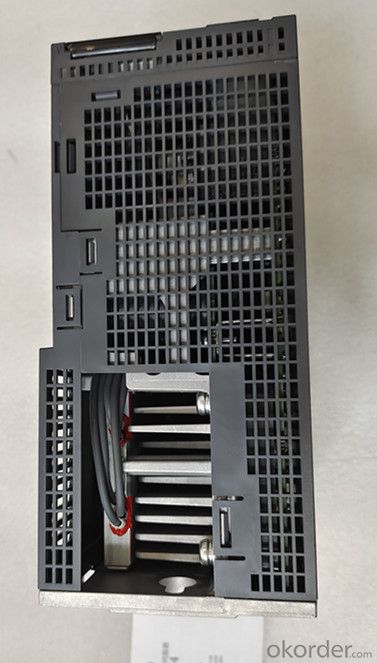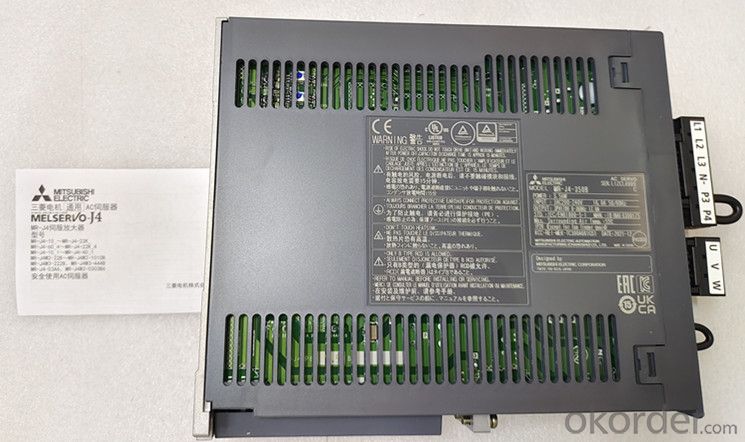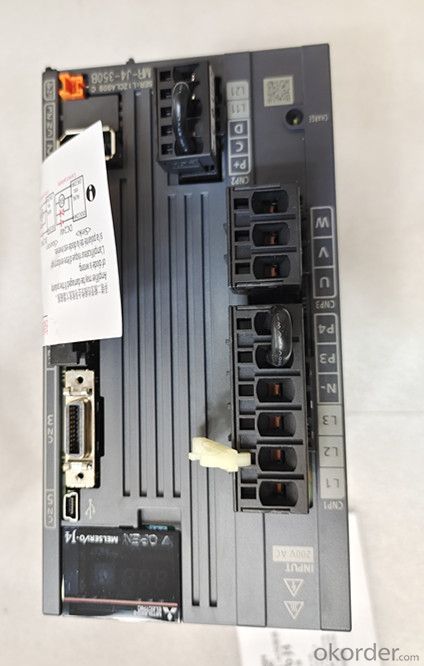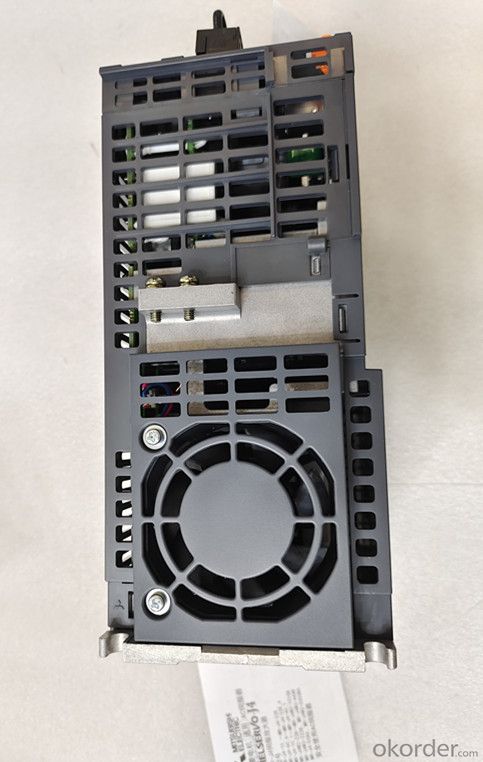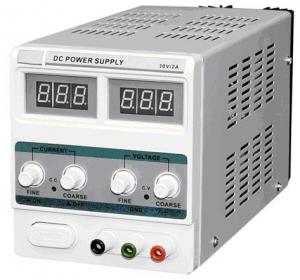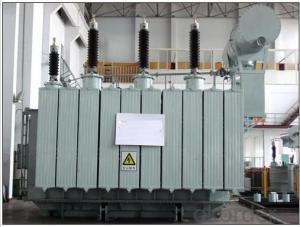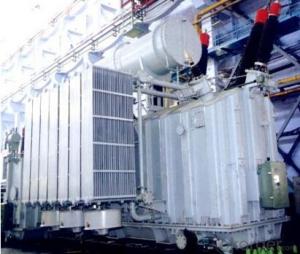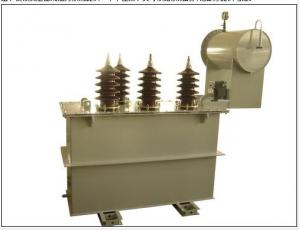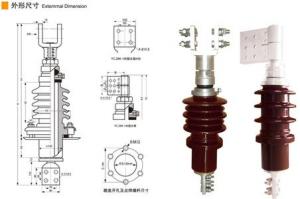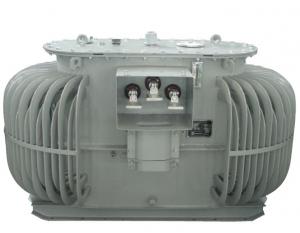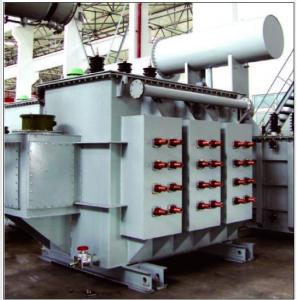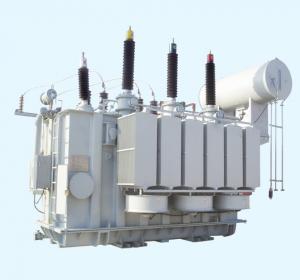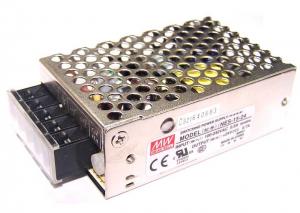Have Anti-Seismic Function Mitsubishi Amplifier MR-J4-350B Realize Close Loop
- Loading Port:
- Shanghai
- Payment Terms:
- TT OR LC
- Min Order Qty:
- 1 kg
- Supply Capability:
- 2000 kg/month
OKorder Service Pledge
OKorder Financial Service
You Might Also Like
Specification
1-axis servo amplifier.
Mitsubishi universal AC servo amplifier melcervo-j4 series. Rated output:
0.1kw. Interface: sscnet Ⅲ / h. Power supply: single phase AC100V power supply
Only for servo amplifiers below 0.4KW, Mitsubishi PLC and servo. Special
specifications: CC linkle is supported Field network motion control supports
the co server amplifier of CC linkle field network.
Ethernet based open network, supporting motion control mr-j4-350b
It not only inherits the high performance and high reliability of the original
products, but also makes further improvements beyond imagination, Mitsubishi PC
and servo. Melcervo-j4 weight reduction debut.
The future star of the same service market. World class servo products,
What should the new generation of melcervo be like? The answer to the question
has floated
Out of the water. Melcervo-j4... It represents another evolution based on the
original high performance after full digitization. It is also the latest
masterpiece of melcervo, which fully meets the requirements of human and
environment. For example, the safety specification and "easy to use" design for
human use safety and environmental protection. Energy saving performance to
meet the needs of the era of environmental protection.
Melcervo-j4, the evolution of zhaoyue performance, is shocking! 1 axis co
serving amplifier. A Tonga AC co service amplifier melcervo-j4 series. Rated
output: 11.0kwmr-j4-350b. Interface: sscnet Ⅲ / h. Power supply: three-phase
ac200v.
Servo amplifier supporting sscnet / h.
A fully synchronous system using high-speed serial optical communication can be
established.
It can be combined with servo system controller to maximize the functional
performance of servo system and improve mechanical performance through high-
performance motor.
By improving the resolution and processing speed of the encoder,
Make the rotary servo motor have higher precision positioning performance and
smoother rotation performance mr-j4-350b.
Just turn on the one click adjustment function to adjust the servo gain
including mechanical resonance wave pusher, high-end seismic control II and
low-pass filter. Easily start the advanced anti-seismic function to maximize
the mechanical performance.
And it can automatically implement the response setting required for real-time
automatic adjustment. Mr-j4-350b, cable length: 3M, (dry mr-j2s -- CP (1) -
s084)
For mr-j2s-11ka (4) to mr-j2s-22ka (4). Cable length: 10M. Dry mr-j2s-700a (4)
/ CP / CL or less
Encoder for hc-sfs; HC-LFS; HC-RFS; HC-UFS2000r/min; Ha-lfs servo motor- L
represents bending life, mr-j2m multi axis servo amplifier extension unit.
1. The servo controller can easily convert the operation module and Fieldbus
module through the automation interface,
At the same time, different fieldbus modules are used to realize different
control modes (RS232, RS485, optical fiber, INTERBUS, PROFIBUS). The control
mode of general frequency converter is relatively single.
2. The servo controller is directly connected with the resolver or encoder to
form a closed loop of speed and displacement control. The general frequency
converter can only form an open-loop control system.
3. The control indexes of servo controller (such as steady-state accuracy and
dynamic performance) are better than general frequency converter. 1-axis servo
amplifier. Yiling general AC servo amplifier melcervo-j4 series.
1-axis servo amplifier.
Mitsubishi universal AC servo amplifier melcervo-j4 series. Rated output:
0.1kw. Interface: sscnet Ⅲ / h. Power supply: single phase AC100V power supply
Only for servo amplifiers below 0.4KW, Mitsubishi PLC and servo. Special
specifications: CC linkle is supported Field network motion control supports
the co server amplifier of CC linkle field network.
Ethernet based open network, supporting motion control mr-j4-350b
It not only inherits the high performance and high reliability of the original
products, but also makes further improvements beyond imagination, Mitsubishi PC
and servo. Melcervo-j4 weight reduction debut.
The future star of the same service market. World class servo products,
What should the new generation of melcervo be like? The answer to the question
has floated
Out of the water. Melcervo-j4... It represents another evolution based on the
original high performance after full digitization. It is also the latest
masterpiece of melcervo, which fully meets the requirements of human and
environment. For example, the safety specification and "easy to use" design for
human use safety and environmental protection. Energy saving performance to
meet the needs of the era of environmental protection.
Melcervo-j4, the evolution of zhaoyue performance, is shocking! 1 axis co
serving amplifier. A Tonga AC co service amplifier melcervo-j4 series. Rated
output: 11.0kwmr-j4-350b. Interface: sscnet Ⅲ / h. Power supply: three-phase
ac200v.
Servo amplifier supporting sscnet / h.
A fully synchronous system using high-speed serial optical communication can be
established.
It can be combined with servo system controller to maximize the functional
performance of servo system and improve mechanical performance through high-
performance motor.
By improving the resolution and processing speed of the encoder,
Make the rotary servo motor have higher precision positioning performance and
smoother rotation performance mr-j4-350b.
Just turn on the one click adjustment function to adjust the servo gain
including mechanical resonance wave pusher, high-end seismic control II and
low-pass filter. Easily start the advanced anti-seismic function to maximize
the mechanical performance.
And it can automatically implement the response setting required for real-time
automatic adjustment. Mr-j4-350b, cable length: 3M, (dry mr-j2s -- CP (1) -
s084)
For mr-j2s-11ka (4) to mr-j2s-22ka (4). Cable length: 10M. Dry mr-j2s-700a (4)
/ CP / CL or less
Encoder for hc-sfs; HC-LFS; HC-RFS; HC-UFS2000r/min; Ha-lfs servo motor- L
represents bending life, mr-j2m multi axis servo amplifier extension unit.
1. The servo controller can easily convert the operation module and Fieldbus
module through the automation interface,
At the same time, different fieldbus modules are used to realize different
control modes (RS232, RS485, optical fiber, INTERBUS, PROFIBUS). The control
mode of general frequency converter is relatively single.
2. The servo controller is directly connected with the resolver or encoder to
form a closed loop of speed and displacement control. The general frequency
converter can only form an open-loop control system.
3. The control indexes of servo controller (such as steady-state accuracy and
dynamic performance) are better than general frequency converter. 1-axis servo
amplifier. Yiling general AC servo amplifier melcervo-j4 series.
- Q: I am doing a school project of a Wind Turbine; and I need to show a transformer or what a transformer is in a wind turbine. I have just 1 question. WHY DO PEOPLE USE TRANSFORMERS?
- Transformers do one of two things; they either step down the voltage and increase the amperage or they step up the voltage and decrease the amperage. They do this to modulate the line current. They are also usually part of a circuit that creates electricity; to smooth out the flow of current (like in your wind turbine example). Voltage along the primary line in the US is usually at 220 volts and that is to high to use in a house so it is stepped down to 110 volts and sent along secondary lines to homes and businesses. That is done by those big transformers you see in the back yard or hanging off of telephone and power poles. The reason why 220 volts are carried through the main line is to make it transmit further distances before another transformer is required to step up the power to keep it flowing through the line. Most household electronic equipment use a transformer to step the voltage down or up to the levels needed (usually down). The voltage running into the house is too high for most modern TV sets, computers, VCRs and DVD players as well as other stereo components so it has to be stepped down. This also gives the circuit more amperage (more power so to speak) so that it draws less amps from the main circuit and can do its job like spinning motors that take a lot of power.
- Q: I know that before the 2007 release of transformers and this years sequel there were various animated tv series and comics. I just want to know what the live action movies are actually based on. Like are the movies just real life portrayls of the the animated story line? Or are they original plots just based on the ideas of autobots, decpticons and there home cybertron?If the plots for the movies are based off the comics of series (like the x men movies) what could be the possible plot for the 3rd installment of the film franchise?
- Micheal Bay just blowing stuff up with Robots. Would be a miracle if they used some cartoon or comic book story.
- Q: Transformers are divided into several. What is the role of each? To be specific!
- (Ii) Classification by purpose Transformers according to their use can be divided into power transformers, audio transformers, pulse transformers, constant voltage transformers, coupling transformers, autotransformers, isolation transformers and other. (C) according to the core (or core) shape classification Transformers according to the core (core) shape can be divided into "E" type transformers, "C" type transformers and ring transformers.
- Q: I remember playing with a brand of shapeshifting car/robot toys in the 80's when I was a kid that was not Transformers. They were popular, had a catchy commercial jingle, and were NOT Transformers, but I can't remember what they were called. Help!
- GO-BOTS-AND THEIR STORY. The Gobot toyline was based on figures produced by Popy of Japan (later Bandai), named Machine Robo. In 1983, Tonka decided to import the line into America after realizing Hasbro were doing the same with Takara’s Diaclone and Microman's Microchange lines, which became Transformers after crossing the Pacific. In another similarity to Transformers, Tonka decided to make the figures sentient robots, rather than human-piloted mecha as they had been in Japan, and divided them into two factions – the good Guardians and evil Renegades (although early figures were simply described as ‘Friendly’ or ‘Enemy’ on the packaging). The figures were all given individual names, in contrast to the simple designations they received in Japan. The line sold well initially, but was overtaken by Transformers, something often attributed to Hasbro's much better promotion and media tie-ins – for example, Gobot figures had no character profiles on their packaging, whereas Hasbro included tech spec biographies for each character on the back of the card or box. Gobots were also largely considered by fans and the marketplace to be overly simplistic when compared to the more sophisticated Transformers line; whereas Transformers characters had iconic names (e.g., Megatron, Starscream, Optimus Prime) and multi-faceted transformation cycles (where the robot often didn't resemble the vehicle), Gobots characters had much more obvious names (e.g., Scooter who changed into a scooter, Tank who changed into a tank, Dozer who changed into a bulldozer, etc.) and simplified transformation cycles (e.g. Tank simply stood up to transform). 1987 was the final year in which new Gobots were released.
- Q: S11-1250kVA transformer oil capacity how much
- S11-1250kVA transformer oil capacity is 550kg, the pressure of the relevant information will be marked on the nameplate, the nameplate has the relevant parameters.
- Q: how low voltage smelting transformer can be modified to a higher voltage to be used in ferronickel production
- You need to provide more information about the original use of the transformer. Nickel smelting is a very specialized application that calls for a 'submerged arc'. Basically, the arc is fairly short and will essentially be submerged in a layer of slag on top of the molten material. It is a semi-continuous process in that periodically, some of molten nickel is poured off. The stream of molten nickel is blasted with water that causes the nickel to solidify into small pellets. Steel melting furnaces, by contrast, involve a much longer arc. The slag layer in the furnace is much thinner, and much of the arc is above the slag. It is a batch process in that once the 'campaign' has been completed, the entire melt is 'tapped' - poured into a tundish either to be cast into ingots or to feed a continuous casting process to make billets, slabs or even plates. There are other smelting processes for other materials - for example, silicon is produced via a smelting process. I would guess that if the voltage requirements of the nickel smelting process are different from the requirements of the original utilization, then it would be necessary that the transformer be redesigned and rewound - something that I would not expect to be very practical.
- Q: I hate feeling the need to justify myself, but I've seen a lot of answers telling askers to do their own homework. I'm trying to do so, but can't find any equations in the book relating power to voltage as well as turn number. Is it PviN? I've just seen Pvi, but that wouldn't apply to multiple loops. This is for ideal transformers by the way, so power for the secondary and primary coils is the same right? But are their vi's equal, or their viN's?The primary coil of a transformer has 200 turns and the secondary coil has 800 turns. The power supplied to the primary coil is 400 watts. What is the power generated in the secondary coil if it is terminated by a 20-ohm resistor?
- The turns ratio is 4:1 of the primary. The power supplied to the primary is 400W. So regardless of anything else, in a ideal transformer, 400W is available on the secondary. But voltage will be 4x higher, current 4x smaller, than the voltage and current in the primary. Disregarding all that, if there is 400W of power flowing in the primary, then 400W will be being dissipated in the 20 ohm resistor. Watts in watts out, but secondary load (resistance) controls the wattage. There is no way to tell the output voltage and current, without knowing the input voltage and current. But whatever they are, the product of voltage x current will be 400W, in this instance.
- Q: Who knows the density of the transformer oil is how much?
- 25 # transformer oil: 895kg / m3 877.6kg / m3 45 # transformer oil: 895kg / m3 879.0kg / m3
- Q: i have this audio transformer (about the size of a bottle cap) with three prongs on one side and two on the other. i am completely mystified by this configuration. how would i (say for example) hook up this transformer to a 9v battery in order to increase voltage? thx
- The two wires on the one side of the transformer is the side for the primary windings; the side of the transformer with the three wires coming out is the secondary, and is center tapped. You cannot use a transformer with a battery because a transformer steps up or steps down a change in voltage (AC signal voltage), not DC voltage from a battery. Take an ohm meter and measure the resistance of the primary windings and that of the secondary, from outside lead to the other outside lead, then from one secondary lead to it center lead. It will tell you about the transformer's electrical configuration.
- Q: 1000KVA transformer no-load loss is how much?
- I am in the "China Electromechanical Product Catalog" found a data, 10KV, S9-1000KVA no-load loss is 1.7KW, so the annual loss of power: 1.7 * 8760 = 14892KWH (degrees).
Send your message to us
Have Anti-Seismic Function Mitsubishi Amplifier MR-J4-350B Realize Close Loop
- Loading Port:
- Shanghai
- Payment Terms:
- TT OR LC
- Min Order Qty:
- 1 kg
- Supply Capability:
- 2000 kg/month
OKorder Service Pledge
OKorder Financial Service
Similar products
Hot products
Hot Searches





